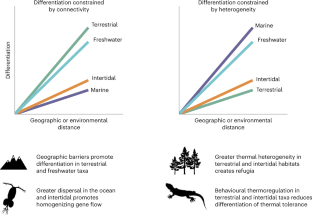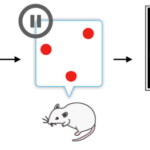2022-12-01 ローレンスリバモア国立研究所(LLNL)
研究者らは、フェンタニルと、アセチルフェンタニルと呼ばれる関連類似物質を、人に過剰摂取を引き起こす可能性のある低レベルの血液や尿中に分析し、その存在を確認するための新しい方法を開発したのだ。フェンタニルと同様に、アセチルフェンタニルも強力なオピオイドであり、近年、米国で多くの過剰摂取による死亡事例が確認されている。
実験では、研究者たちは、血液と尿のサンプルに、人間の過剰摂取例で検出されたレベルのフェンタニルとアセチルフェンタニルを混ぜた。次に、有機溶媒を用いて、これらの生体試料からオピオイドを抽出した。
次に、この有機抽出物を、2,2,2-trichloroethoxycarbonyl chloride、略してtroc chlorideと呼ばれる化学試薬で処理した。
この塩化トロコとフェンタニルの反応により、この化合物は、オピオイドから2つの予測可能な生成物に分解される。1つ目は2-クロロエチルベンゼン、2つ目はトロクノルフェンタリルで、この2つは、標準の法医学装置で容易に検出可能である。
この方法の長所と新規性は、両方の製品をつなぎ合わせて、体内に吸収されたあらゆる種類のフェンタニル関連物質(未知の物質も含む)を特定できることである。
<関連情報>
- https://www.llnl.gov/news/llnl-forensic-science-center-team-develops-new-technique-analyze-fentanyl-blood-urine
- https://journals.plos.org/plosone/article?id=10.1371/journal.pone.0275931
クロロホルム酸化学を用いた合成オピオイドの分析、同定および確認:EI-GC-MSおよびHR-LC-MSによる尿および血漿試料中のフェンタニルおよびアセチルフェンタニルのレトロスペクティブ検出 Analysis, identification and confirmation of synthetic opioids using chloroformate chemistry: Retrospective detection of fentanyl and acetylfentanyl in urine and plasma samples by EI-GC-MS and HR-LC-MS
Carlos A. Valdez ,Roald N. Leif,Todd H. Corzett,Mark L. Dreyer
PLOS One Published: November 2, 2022
DOI:https://doi.org/10.1371/journal.pone.0275931
Abstract
Electron Impact Gas Chromatography-Mass Spectrometry (EI-GC-MS) and High Resolution Liquid Chromatography-Mass Spectrometry (HR-LC-MS) have been used in the analysis of products arising from the trichloroethoxycarbonylation of fentanyl and acetylfentanyl in urine and plasma matrices. The method involves the initial extraction of both synthetic opioids separately from the matrices followed by detection of the unique products that arise from their reaction with 2,2,2-trichloroethoxycarbonyl chloride (Troc-Cl), namely Troc-norfentanyl and Troc-noracetylfentanyl. The optimized protocol was successfully evaluated for its efficacy at detecting these species formed from fentanyl and acetylfentanyl when present at low and high levels in urine (fentanyl: 5 and 10 ng/mL and acetylfentanyl: 20 and 100 ng/mL) and plasma (fentanyl: 10 and 20 ng/mL and acetylfentanyl: 50 and 200 ng/mL), values that reflect levels reported in overdose victims. The HR-LC-MS method’s LOQ (limit of quantitation) for the Troc-norfentanyl and Troc-noracetylfentanyl products was determined to be ~10 ng/mL for both species. Even though the superiority in the detection of these species by HR-LC-MS over EI-GC-MS, the latter method proved to be important in the detection of the second product from the reaction, namely 2-phenylethyl chloride that is crucial in the determination of the original opioid. This observation highlights the importance of using complimentary analytical techniques in the analysis of a sample, whether biological or environmental in nature. The method herein serves as a complementary, qualitative confirmation for the presence of a fentanyl in collected urine, plasma and by extension other biological samples amenable to the common extraction procedures described for opioid analysis. More importantly, the method’s main strength comes from its ability to react with unknown fentanyls to yield products that can be not only detected by EI-GC-MS and HR-LC-MS but can then be used to retrospectively identify an unknown fentanyl.


